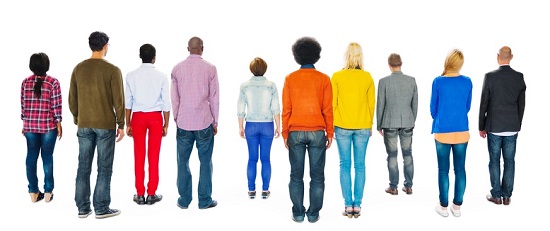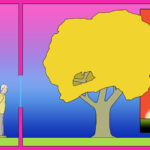Imagine, for a moment, that you have become among the 1 in 10 Americans unfortunate enough to develop an addiction to a substance. Given the definition of addiction, that means you will have experienced negative consequences, and probably will have done harm to yourself and others. Let’s suppose you have been through the addictions treatment system and, like a Sneetch through the Star-Off Machine, you have been removed of the substance or substances that plague you. (The addictive personality is a myth; only half of people with addiction have more than one, not including cigarettes; more than 50% of adults who met criteria for substance use disorder no longer do.) Let’s imagine you are standing on a curb with your back to the latest place you have received treatment, waiting to be picked up by someone who cares deeply about you and wants the best for you.
Logic says that, freed of substances, you are now free to live life as you choose.
However, what are the realities of being you, abstinent?
Before you even developed addiction, factors such as these may have predisposed you to developing it:
- mental illness, perhaps with symptoms of anxiety, depression, thought disorders, and/or personality disorders
- symptoms of trauma
- identifiable, distinctive personality and temperament traits
- environmental influences, including poverty
- negative responses to, interpretations of, or labeling by others of your difficult experiences
- sleep disruption
- physical pain
- physical challenges such as physical illness, physical disability, and/or traumatic brain injury
- genetics and epigenetics
Given that many of these conditions and their symptoms are treated with medication, it makes sense you might have used substances prescribed, unprescribed, legal or illegal – including alcohol, marijuana, nicotine and caffeine – to manage distressing symptoms that interfere with your quality of life and your functioning.
If you’re abstinent from the substance or substances that helped provide you relief from any of the above, those conditions are now present, partially, fully, or extremely. The problems for which you sought solutions through substances may no longer have those solutions.
As you’re standing there on the curb, waiting to begin your new life, your inner state might be alarms and sirens.
You are a person who has lived with predisposing factors to addiction and you have survived the emotional and physical hardships of addiction, plus its defining negative consequences. Those can be traumatizing.
For our purposes, trauma is defined as experiences with events and situations that leave people feeling overwhelmed and powerless.
Any of the following situations you are likely to have experienced during substance use or treatment could have resulted in additional trauma or, at minimum, intense stress or distress:
- withdrawal
- medical detox
- complications and side effects from medications used during treatment
- medical treatments and procedures, inherently stressful for any person
- return to active use, a.k.a. “relapse,” without awareness of how or why
- anticipatory fear of relapse, recurrence, or additional negative consequences
- acquiring new or additional chronic illnesses such as hepatitis or HIV/AIDS
- being abandoned to the mythical “hitting bottom” with nearly tragic consequences
- “tough love” treatment center protocols, revealed by research to be harmful, but still pervasive
- social disconnection and separation from children, partners, family and friends required by hours or days of treatment
- social disconnection via mandated no-technology policies at treatment facilities
- loss of housing, job, benefits, schooling, and/or transportation due to negative consequences, illness, and/or absence required by treatment programs or incarceration
- contact with the criminal justice system
- denial of medication due to wait lists and laws
- self-stigma
- shaming, punishment, stigma, even violation from the treatment system, recovery support groups, and/or society
- lack of certainty about what is evidence-based treatment for what the medical profession terms a brain disease but the recovery community and society continue to see as a depraved choice, a moral problem, a character disorder
So, let’s see. You’ve got pre-disposing conditions, plus new trauma and new stress to handle. That’s a lot to imagine, isn’t it? Wait. There’s more. Abstinence, itself, magnifies things.
- You experience distressing and baffling cognitive impairment. According to NIDA, “Brain-imaging studies from people addicted to drugs show physical changes in areas of the brain that are critical for judgment, decisionmaking, learning, memory, and behavior control.” You want to think better and do better and are flabbergasted when you can’t or don’t.
- You have a really, really hard time feeling better, in spite of every effort. Anhedonia, the brain’s inability to generate feelings of pleasure, is a marked trait in abstinence, sometimes lasting for years.
What are we forgetting? Oh, yes, the push-pull of addiction itself and its core, neurobiological feature: craving. The on-going, wearing anguish of wanting and not having. The largely cue-driven, highly personal, subjective experience of wanting and not wanting to want. Abstinence does not eliminate desire. Craving is a brain thing.
You’ve been imagining, just for a moment, what it’s like to be an abstinent addict. Standing on the curb, your inner experience will likely be influenced by conscious and unconscious stress, distress, discomfort and pain due to pre-existing conditions, trauma, treatment or lack of it, the side effects of abstinence, and the chronic effects of addiction.
Now, imagine the next moment. And the next.
You get to have these moments, moment after moment, perhaps in perpetuity.
How free do you feel to live the life of your choice?
How are you doing? Not so great? Yeah, it’s really hard, isn’t it? Handling all that going on, plus life, too?
That’s why relapse rates for alcoholism and other substance use disorders are high. For many people, it’s too hard.
. . . . .
I am so grateful to the hundreds of people who have shared their stories with me personally, to the thousands I have heard share in person, to the uncountable thousands who share their stories online, and to tireless researchers. I have done my best to share, as a composite and synthesis, their stories and their work.
I am hoping to portray in human terms – with links to articles and research that corroborate each point – the dire inner state of the person with addiction who abstains. I hope to call forth empathy. Abstinence may work for some, but I’m hoping it can be seen as one of many options needed by each individual from which to customize a unique addictions treatment and recovery plan.
Many people “age out” of addiction or recover from addiction on their own without treatment. This post attempts to describe what it’s like to have an acute case of substance use disorder for which one has needed and sought treatment, perhaps multiple times.
I use the term “addict” in this post for brevity, but I primarily use person-first language and refer to myself and others as “people with addiction, “people with alcoholism,” or “people with substance use disorders.” I use the term “alcoholism” as a type of “addiction,” and the terms “addiction” and “substance use disorders” interchangeably unless I’m writing about SMART Recovery which welcomes to its support groups anyone with any addiction.
I share openly that I developed addiction to alcohol at nearly 50 years of age, became abstinent in 2012 without consulting medical professionals (even though trained as an addictions counselor in 2006, I did not know that by 2011 addiction was already known to be a brain disorder), and threw myself into a world of hurt resulting from a combination of the factors above. Only towards the latter quarter of year 4 did I experience an intermittently stable inner state comparable in my memory to the “normal” state of my pre-addiction life.
I advocate for evidence-based treatment vs. belief-based practices for people with substance use disorders.
One of the main objections to the first-order, evidence-based treatment for opioid use disorder – medication-assisted treatment with buprenorphine (Suboxone/Subutex) and methadone – is the perception that “real recovery” requires abstinence. Yet, after halting the use of opioids, relapse rates run as high as 85%. Perhaps the reader now understands why that is.
I am hoping this post helps convey why abstinence-based addiction policies and practices can be cruel choices, even tragic ones, for people with substance use disorder. Further, abstinence-based policies can result in failed addictions treatment strategies for nations and their people.
. . . . .
Further reading:
Why Opioid Maintenance Does Not Replace One Addiction with Another
Addiction or Dependence: A Life and Death Difference
How to Get Help for a Loved One with Addiction
How to Talk with Someone About Getting Help with Addiction
Last updated 3/11/17


